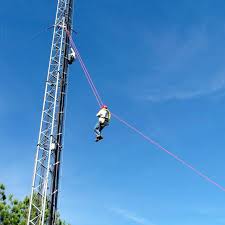It’s been just over a month since AT&T network operations president Bill Smith told an audience at PCIA’s Wireless Infrastructure Show not to worry about the carrier’s $48 billion bid for DirecTV. “I don’t think anybody should be concerned that this is a left turn by AT&T with respect to our investment in our network,” Smith said at the time.
But a left turn may be just what AT&T has taken, or at least a detour. By early June, Wall Street analysts were already hearing bad news from AT&T suppliers. Michael Genovese of MKM Partners told his clients that a “new widespread capital spending freeze in place at AT&T,” could impact vendors, and Jefferies & Company’s George Notter said his contacts were reporting sharp declines in revenue from AT&T.
“AT&T turf vendors are feeling the pinch,” said TelForce Group CEO Ron Deese, adding that a leading AT&T contractor released 15 construction managers and project coordinators last Friday, and transferred five more to a Sprint project. Earlier this month, dozens of people were laid off by a major integration company, according to Wireless Estimator. At least one contractor has warned investors about the AT&T spending freeze and its potential impact, according to Michael Genovese.
Much of AT&T’s capital spending is part of its Project Velocity IP, a $14 billion, 3-year program that started at the very end of 2012. Of that $14 billion, $8 billion was earmarked for investment in AT&T’s wireless network. Last month, the company said that Project Velocity IP is ahead of schedule, with AT&T’s LTE network now covering nearly 290 million people. When AT&T announced the project, its goal was to cover 300 million people by the end of 2014.
Update 6/26: AT&T made the following statement in response to this story:
“We haven’t changed our plan to invest in the $21 billion range in 2014, and we remain committed to our successful Project VIP initiative. We’re nearing completion of our 4G LTE build, reaching nearly 290 million people, and are making great progress on our wireline initiatives. Any changes in spending activity with our vendors are typical of the ebbs and flows of our regular spending cycles.”
Some of AT&T’s largest contractors are part of a program called the Tower Crew Augmentation Program (TCAP), which guarantees partial payment to crews even when AT&T does not have work for them. For AT&T, the program is meant to ensure access to fully trained tower crews when needed. It is unclear how much TCAP contractors will receive when they are not working, and it is not clear how long the payments will last.
Follow me on Twitter.
Image source: Safetyoneinc.com

AT&T slows infrastructure spending, and tower crews feel the pain
ABOUT AUTHOR
